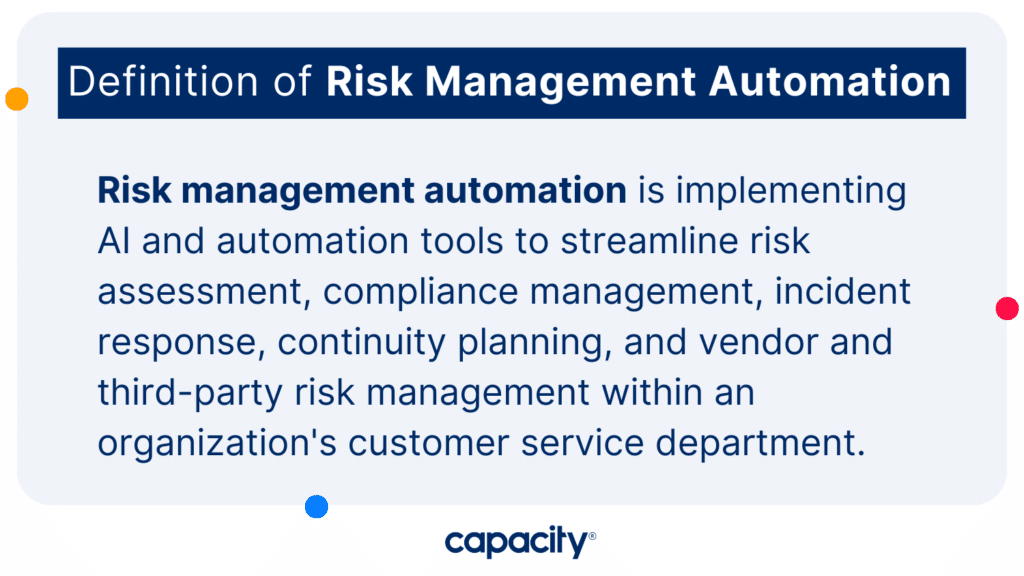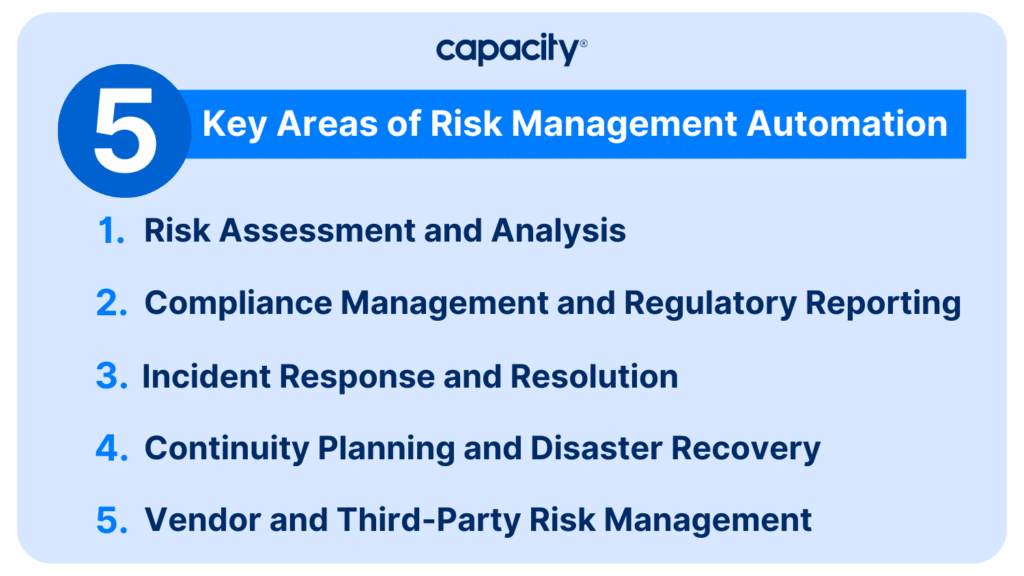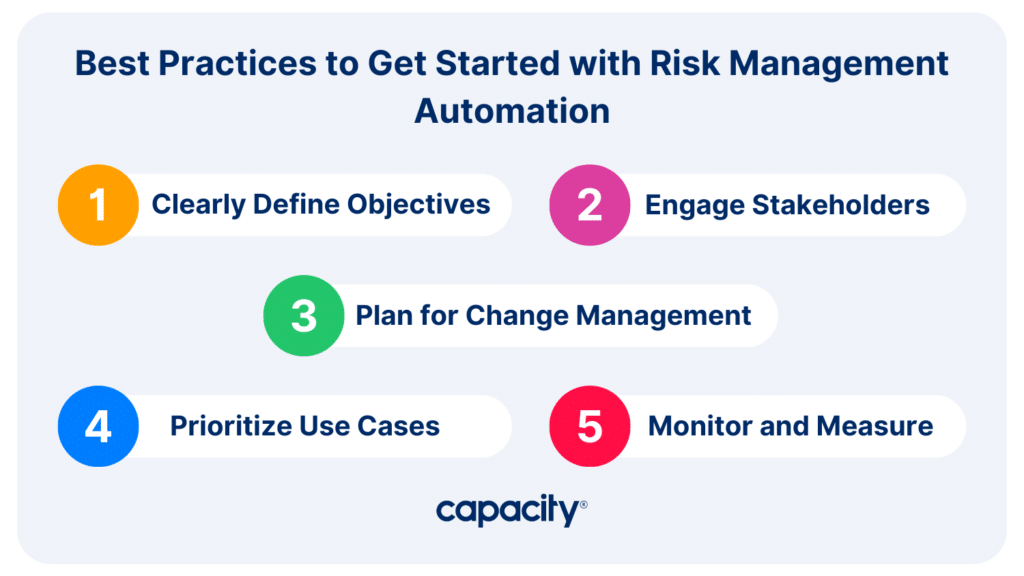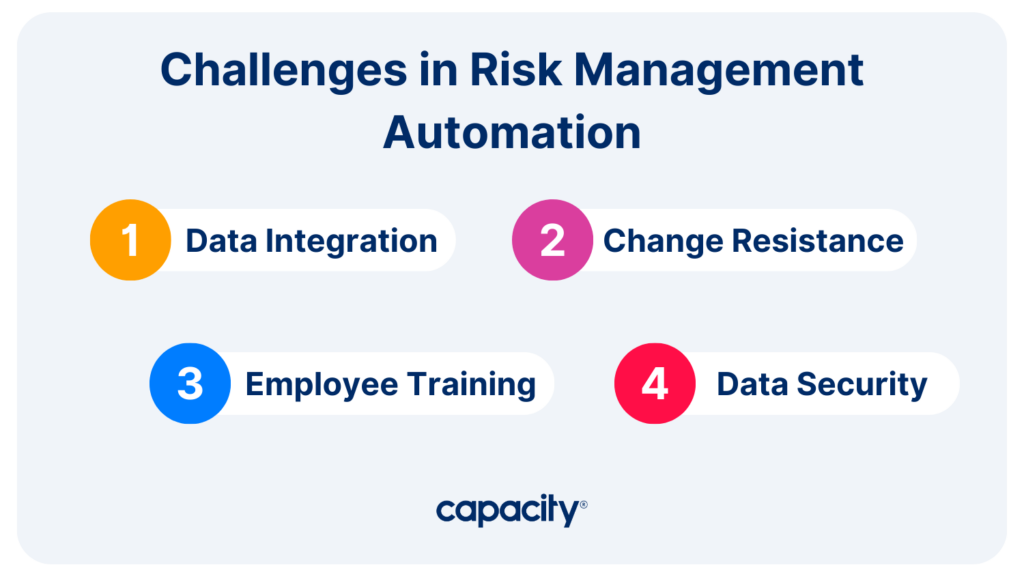As organizations embrace the transformative power of AI and automation tools, integrating them into the customer service department is critical in enhancing operational efficiency and delivering exceptional customer experiences. However, introducing such significant changes requires careful change management strategies. In this article, we will explore the best practices for organizations to effectively manage the transition of AI and automation tools into their customer service operations. Let’s delve into the world of risk management automation and uncover the key areas, benefits, best practices, and challenges associated with this transformative process.
What is Risk Management Automation?

Risk management automation is implementing AI and automation tools to streamline risk assessment, compliance management, incident response, continuity planning, and vendor and third-party risk management within an organization’s customer service department. By automating these processes, organizations can enhance efficiency, accuracy, and scalability while mitigating risks and ensuring regulatory compliance.
Understanding Digital Transformation in Risk Management
Digital transformation has revolutionized risk management practices, enabling organizations to embrace technological advancements and use data-driven insights. Integrating AI and automation tools in risk management allows for real-time monitoring, analysis, and response to potential risks, ultimately driving more proactive and effective risk mitigation strategies.
5 Key Areas of Risk Management Automation

1. Risk Assessment and Analysis
Automation enables organizations to gather and analyze vast amounts of data to identify potential risks and their potential impact. By leveraging AI algorithms, risk assessment and analysis processes can be significantly enhanced, providing organizations with valuable insights for informed decision-making and risk mitigation strategies.
2. Compliance Management and Regulatory Reporting
Compliance management is a critical aspect of risk management, particularly in customer service operations. Automation tools facilitate the monitoring and enforcement of compliance requirements, ensuring adherence to industry regulations. Automated regulatory reporting streamlines the process, reducing manual effort and increasing accuracy.
3. Incident Response and Resolution
In the event of an incident or security breach, automation tools can expedite incident response and resolution processes. Automated workflows and predefined escalation protocols enable swift identification, containment, and remediation of issues, minimizing potential damages and improving overall customer service delivery.
4. Continuity Planning and Disaster Recovery
Risk management automation plays a vital role in continuity planning and disaster recovery. Automated processes streamline the creation, testing, and updating of continuity plans, ensuring that organizations are prepared to mitigate risks and maintain uninterrupted customer service operations in the face of disruptions or disasters.
5. Vendor and Third-Party Risk Management
Organizations often rely on vendors and third-party partners to deliver essential services. Risk management automation tools assist in assessing and monitoring the risks associated with these external entities. By automating vendor and third-party risk management processes, organizations can proactively identify and address potential vulnerabilities and ensure compliance with risk mitigation strategies.
Benefits of Risk Management Automation
Implementing risk management automation offers several significant benefits. It enhances operational efficiency by reducing manual effort and streamlining complex processes. Automation tools facilitate real-time monitoring, analysis, and response to risks, enabling proactive risk mitigation strategies. Furthermore, automation improves accuracy, scalability, and consistency in risk management practices, ultimately leading to improved regulatory compliance and enhanced customer trust.
A Few Best Practices to Get Started with Risk Management Automation

Successful implementation of risk management automation requires adherence to key best practices:
- Clearly Define Objectives: Identify specific goals and outcomes to align automation efforts with organizational priorities.
- Engage Stakeholders: Involve all relevant stakeholders, including IT, customer ops, and contact center managers, to ensure comprehensive understanding, collaboration, and support throughout the automation journey.
- Prioritize Use Cases: Begin with use cases that offer significant value and low complexity, gradually expanding to more complex processes.
- Plan for Change Management: Develop a comprehensive change management plan, including training and communication strategies, to prepare employees for the automation transition and mitigate resistance to change.
- Monitor and Measure: Implement robust monitoring and measurement mechanisms to assess the effectiveness of automation initiatives, identify areas for improvement, and optimize processes continually.
Overcoming Challenges in Risk Management Automation

While risk management automation brings substantial benefits, challenges may arise during implementation:
- Data Integration: Ensuring seamless integration of disparate data sources can be complex. Organizations must invest in data integration technologies and strategies to consolidate and leverage data effectively.
- Data Security: Automation introduces new security risks. Organizations must prioritize data security measures, including encryption, access controls, and regular audits, to protect sensitive information.
- Employee Training: Adequate training is crucial to facilitate employee readiness and adoption of automation tools. Investing in comprehensive training programs ensures employees understand the purpose, benefits, and usage of automation technologies.
- Change Resistance: Resistance to change is common during automation initiatives. Effective change management strategies, including communication, engagement, and addressing concerns, help overcome resistance and foster a positive automation culture.
Effective change management is pivotal in successfully integrating AI and automation tools into customer service operations. By embracing risk management automation, organizations can enhance efficiency, mitigate risks, ensure regulatory compliance, and deliver exceptional customer experiences. With a comprehensive understanding of key areas, benefits, best practices, and challenges, IT professionals, customer ops teams, and contact center managers can navigate the transformation journey and unlock the full potential of risk management automation. Embrace this digital transformation and pave the way for a future-ready customer service department. Try Capacity for free now!

Automate Your Work
Capacity’s enterprise AI chatbot can help:
- Answer FAQs anytime, anywhere
- Find relevant documents within seconds
- Give surveys and collect feedback





